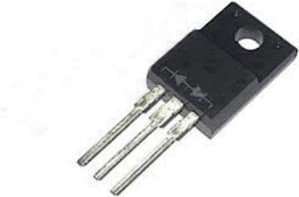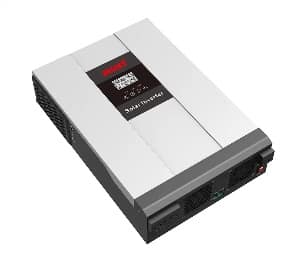Electronic Components Supplier | Transformers, Inductors, Inverters
Introduction: The Silent Backbone of Modern Civilization
Every time you flip a switch, charge your phone, or stream a movie, you are tapping into a vast, intricate network of electrical power. This journey from power plant to your outlet is made possible by one of the most critical, yet often overlooked, pieces of technology: the transformer. But not all transformers are created equal. In the realm of distribution, two key players emerge: the Dist Transformer and the DTR Transformer. Today, we are on the cusp of a new era where these fundamental devices are being integrated with artificial intelligence, creating a smarter, more resilient, and efficient transformer and distribution grid. This article delves into this technological evolution, exploring how it addresses modern energy challenges and paves the way for a sustainable future.

Internal diagram of distribution transformer
1. Understanding the Core: Distribution Transformers (Dist Transformer)
At its heart, a transformer is a static electrical device that transfers electrical energy between two or more circuits through electromagnetic induction. Its primary function is to change voltage levels. A Dist Transformer, short for Distribution Transformer, is the final link in the electricity supply chain. It is the ubiquitous box you see on utility poles or in ground-level cabinets in your neighborhood.
1.1 The Role of a Dist Transformer
The Dist Transformer performs a simple but vital task: it steps down the voltage from the primary distribution level (typically in the range of 11kV or 33kV) to a low voltage (240V/120V or 415V) that is safe for use in homes, businesses, and small industries. It operates 24/7, is designed for high efficiency at partial loads, and is optimized for cost-effectiveness due to its massive deployment across the grid.
1.2 Key Characteristics of a Standard Dist Transformer
- Efficiency: Designed to minimize energy losses (copper and iron losses) during the voltage step-down process.
- Durability: Built to withstand environmental stressors like temperature fluctuations, rain, and humidity.
- Constant Operation: Typically operates at less than full load but is always on, making its no-load losses a critical efficiency factor.
2. The Next Evolution: The Distribution Transformer Rectifier (DTR Transformer)
While the Dist Transformer handles AC (Alternating Current) power, many modern applications—from mass transit to industrial processes and renewable energy integration—require DC (Direct Current) power. This is where the DTR Transformer, or Distribution Transformer Rectifier, comes into play.
2.1 What is a DTR Transformer?
A DTR Transformer is an integrated unit that combines a distribution transformer with a rectifier assembly. Its function is twofold:
- Transform: Step down the high AC input voltage to a lower AC voltage, just like a standard Dist Transformer.
- Rectify: Convert that lower AC voltage into a stable DC output voltage using semiconductor devices like diodes or thyristors.
2.2 Key Applications of DTR Transformers
- 2.2.1 Mass Transit Systems: Electric trains, trams, and subways often run on DC power. DTR Transformers are installed at substations along the routes to provide the necessary DC traction power.
- 2.2.2 Industrial Processes: Electrolysis, large DC motor drives, and battery charging systems rely on the robust DC power supplied by DTR units.
- 2.2.3 Renewable Energy Integration: The DC output from solar farms or battery storage systems often needs to be synchronized and connected to the AC grid, a process where DTR systems play a supporting role in power conversion.
3. The Digital Leap: AI and IoT in Transformer and Distribution Management
The true revolution in the transformer and distribution sector is not just in hardware but in intelligence. The integration of sensors, Internet of Things (IoT) connectivity, and Artificial Intelligence (AI) is creating a “smart grid” that is self-healing, efficient, and predictive.
3.1 From Dumb Hardware to Smart, Connected Assets
Modern Dist Transformer and DTR Transformer units can be outfitted with a suite of sensors that monitor:
- Temperature and Load: Real-time monitoring of oil and winding temperature.
- Vibration and Noise: Detecting anomalies that indicate mechanical faults or loosening components.
- Partial Discharge: A key early warning sign of insulation degradation and impending failure.
This data is transmitted via IoT networks to centralized cloud platforms for analysis.
3.2 The Role of AI and Predictive Analytics
This is where the magic happens. AI algorithms process the vast streams of data from thousands of distribution assets.
- Predictive Maintenance: AI can predict failures before they happen. By analyzing trends in temperature, load, and partial discharge, utilities can schedule maintenance for a specific Dist Transformer during low-demand periods, preventing costly unplanned outages.
- Load Forecasting and Management: AI can analyze historical consumption data, weather patterns, and even local events to forecast electricity demand on a hyper-local level. This allows for dynamic load balancing across the distribution network, optimizing the performance of every transformer and extending its lifespan.
- Integration of Distributed Energy Resources (DERs): As more homes add solar panels and EVs, the traditional one-way power flow becomes two-way. This can cause voltage fluctuations and overload local Dist Transformers. AI-managed systems can dynamically control these flows, ensuring grid stability and preventing transformer overload.
4. The Hotspot: Why This Matters Now More Than Ever
The modernization of the transformer and distribution infrastructure is a critical global hotspot for several reasons:
- Aging Infrastructure: In many countries, the grid is old and failing. Smart transformer technology offers a cost-effective way to upgrade it.
- The Renewable Energy Transition: The shift to wind and solar power is variable and decentralized. A smart, flexible distribution grid, managed by AI, is essential to handle this complexity.
- Rising Energy Demand: Data centers, EVs, and electrification of industries are pushing demand higher. Efficient distribution is key to meeting this demand without building expensive new power plants.
- Climate Change Resilience: Smart grids with self-healing capabilities can automatically reroute power around damaged equipment after extreme weather events, drastically reducing outage times.

Picture of distribution transformer
Conclusion: The Intelligent Grid is Here
The humble transformer has come a long way. From the basic Dist Transformer powering our neighborhoods to the specialized DTR Transformer driving our trains and industries, these devices are the unsung heroes of our electrified world. Now, by marrying this hardware with the software brilliance of AI and IoT, we are entering a new age of energy distribution. This intelligent network promises not just to deliver power, but to do so with unparalleled efficiency, reliability, and sustainability, forming the bedrock of our clean energy future. For utilities, industries, and consumers alike, understanding this transformation is no longer a technical nicety—it is an economic and environmental imperative.
Luoyang Datang Energy Technology Co., Ltd. is a high-tech enterprise integrating R&D, manufacturing and supply of power equipment such as transformers, new energy components, distribution cabinets and inverters. With technological innovation as the core, we focus on creating high-reliability and high-performance power solutions to serve global customers. With a strict quality control system and international standard certification, we continue to output excellent products and enable customers to build safe and stable power systems.
If you have any questions, please feel free to contact us!
Tel.: 0086-173 9637 0277
WeChat: 0086-173 9637 0277
WhatsApp: 0086-173 9637 0277
Email: sales@pddn.com







